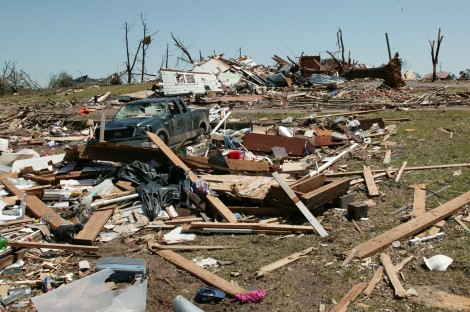Severe Weather - Know Your Risk, Take Action, Be A Force Of Nature
FEMA | -

ATLANTA--As the nation marks the first anniversary of one of the largest tornado outbreaks in U.S. history, the National Oceanic and Atmospheric Administration and the Federal Emergency Management Agency are teaming up this week to save lives from severe weather.
The two agencies encourage the public nationally and in FEMA Region IV, which encompasses Alabama, Florida, Georgia, Kentucky, Mississippi, North Carolina, South Carolina and Tennessee, to "know your risk, take action, and be a force of nature" by taking proactive preparedness measures and inspiring others to do the same. While the type and severity of threats vary across FEMA's 10 Regions, the need to be prepared is universal.
Last April, tornadoes raked the central and southern United States, spawning more than 300 tornadoes and claiming hundreds of lives. That devastating, historic outbreak was only one of many weather-related tragedies in 2011, which now holds the record for the greatest number of multi-billion dollar weather disasters in the nation's history.
The country has already experienced early and destructive tornado outbreaks in the Midwest and South this year over the last two months, including a significant number of tornadoes last weekend. May is the peak season for tornadoes, so it is important to take action now.
"The damaging tornadoes that struck this year, causing widespread devastation as well as loss of life, also spurred many amazing and heroic survival stories," said NOAA Administrator Jane Lubchenco, Ph.D. "In every one of these stories people heard the warning, understood a weather hazard was imminent and took immediate action. We can build a Weather-Ready Nation by empowering people with the information they need to take preparedness actions across the country."
"One of the lessons we can take away from the recent tornado outbreaks is that severe weather can happen anytime, anywhere," said FEMA Administrator Craig Fugate. "While we can't control where or when it might hit, we can take steps in advance to prepare and that's why we are asking people to pledge to prepare, and share with others so they will do the same."
“If we learned anything from last April, it is that we lost too many lives,” said FEMA Region IV Administrator Phil May. “A prepared public is our nation’s most valuable resource in a disaster, and through disaster preparedness we can save lives.”
To "be a force of nature," FEMA and NOAA encourage citizens to prepare for extreme weather by following these guidelines:
Know your risk: The first step to becoming weather-ready is to understand the type of hazardous weather that can affect where you live and work, and how the weather could impact you and your family. Check the weather forecast regularly and sign up for alerts from your local emergency management officials. Severe weather comes in many forms and your shelter plan should include all types of local hazards.
Take action: Pledge to develop an emergency plan based on your local weather hazards and practice how and where to take shelter. Create or refresh an emergency kit for needed food, supplies and medication. Post your plan where visitors can see it. Learn what you can do to strengthen your home or business against severe weather. Obtain a NOAA Weather Radio. Download FEMA's mobile app so you can access important safety tips on what to do before and during severe weather. Understand the weather warning system and become a certified storm spotter through the National Weather Service.
Be a force of nature: Once you have taken action, tell your family, friends, school staff and co-workers about how they can prepare. Share the resources and alert systems you discovered with your social media network. Studies show individuals need to receive messages a number of ways before acting - and you can be one of those sources. When you go to shelter during a warning, send a text, tweet or post a status update so your friends and family know. You might just save their lives, too. For more information on how you can participate, visit www.ready.gov/severeweather
The Salvation Army annually helps more than 30 million Americans overcome poverty, addiction, and economic hardships through a range of social services. By providing food for the hungry, emergency relief for disaster survivors, rehabilitation for those suffering from drug and alcohol abuse, and clothing and shelter for people in need, The Salvation Army is doing the most good at 7,600 centers of operation around the country. In the first-ever listing of “America’s Favorite Charities” by The Chronicle of Philanthropy, The Salvation Army ranked as the country’s largest privately funded, direct-service nonprofit. For more information, visit www.SalvationArmyUSA.org. Follow us on Twitter @SalvationArmyUS and #DoingTheMostGood.